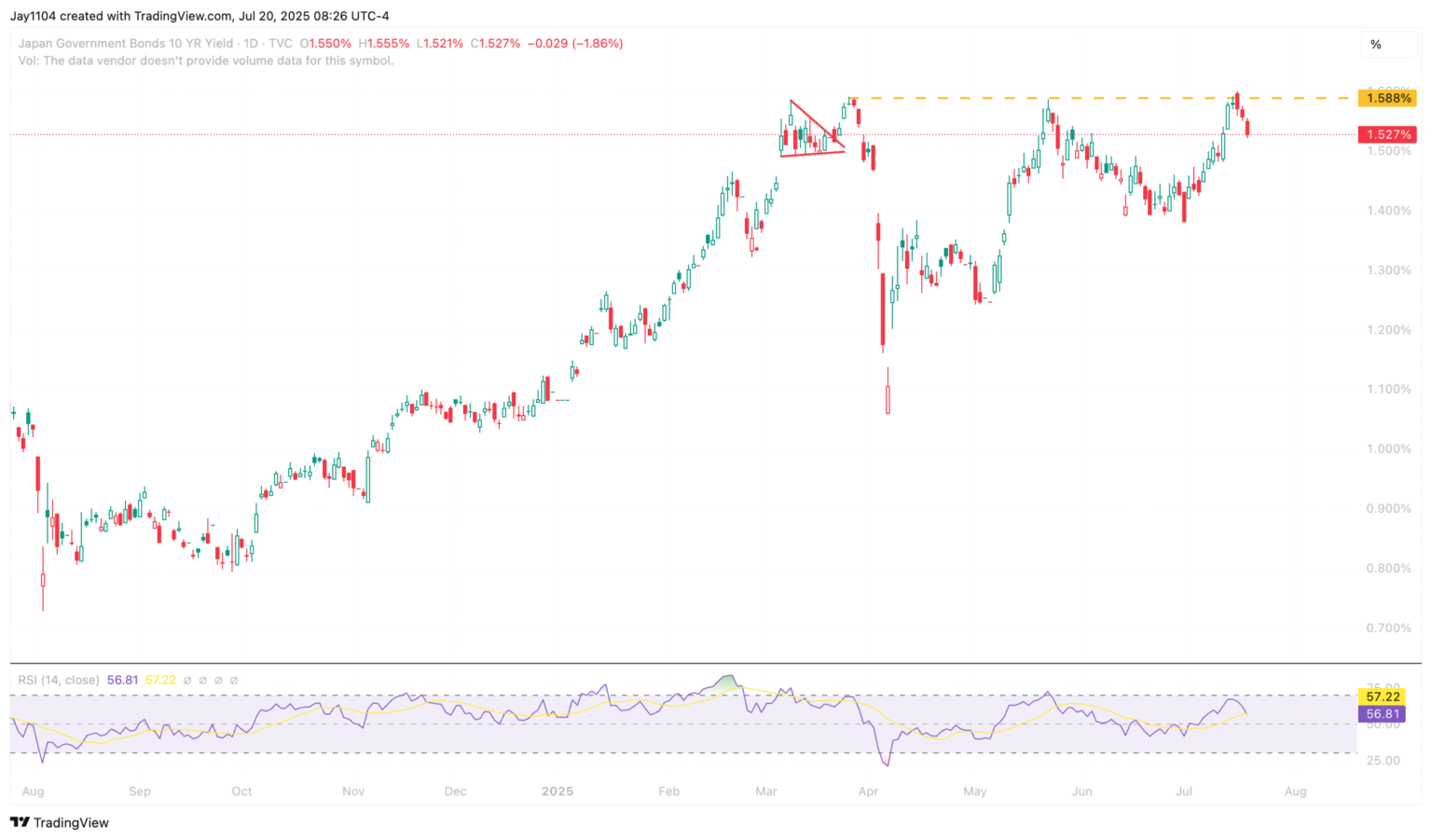In a recent turn of events, Japan’s political landscape underwent a significant transformation as the ruling coalition experienced notable setbacks in the upper house elections. This political shift has raised eyebrows among investors and market analysts, igniting concerns over its potential repercussions on Japan’s financial markets, specifically the Japanese government bonds (JGBs) and the yen currency.
The tremors felt in the political arena have swiftly cascaded into the realm of economic policy and market projections, particularly impacting the yen and Japanese government bonds. In the days leading to the pivotal weekend vote, both the yen and JGBs were subjected to mounting pressure, hinting at a broader sentiment of uncertainty and apprehension among investors.
This sentiment was further underscored by the notable uptick in rates for various tenures of JGBs, which marked a significant shift in the yield landscape. The past week, in particular, witnessed a surge in rates for 2-year, 5-year, and 10-year JGBs. This upward trajectory in yields reached a climax when the 10-year JGB yield briefly soared to 1.6%, a figure that surpassed its previous peak recorded in March. Such movements in the bond market underline a growing concern among investors regarding the sustainability of Japan’s fiscal health amidst this political turbulence.
The ripple effects of Japan’s election outcomes and the attendant rises in JGB yields extend far beyond the Japanese shores, casting a sizable shadow over global financial markets. Specifically, this scenario augurs significant implications for long-end treasury yields in the United States. A further ascent in Japanese yields, spurred on by the election results, could either prompt a corresponding hike in U.S. Treasury rates or lead to a narrowing of the yield spread between U.S. Treasuries and JGBs. This narrowing gap holds the potential to thrust the yen carry trade back into the limelight, a financial strategy that has waned in prominence over recent years. Currently, the spread hovers around 2.9%, just a whisker above the pivotal support level of 2.85%, which has historically played a crucial role in shaping trading strategies.
The pairing of the USD/JPY currency exchange rate with the yield spread between 10-year U.S. and Japanese government bonds has recently exhibited signs of divergence. This decoupling is emblematic of the market’s growing unease regarding Japan’s fiscal prospects, exacerbated by escalating rates, surging inflation, the imposition of new tariffs, and now, an election outcome that could potentially inflate government expenditure further.
This financial landscape is poised to exert additional pressure on the long end of the U.S. yield curve, a trend epitomized by the recent breakout of 5-year consumer price index (CPI) swaps from a two-year trading consolidation. The implication here is stark; if this trend persists, it would be increasingly untenable for U.S. rates to remain stagnant in the face of clear market signals forecasting heightened inflation expectations.
In such a milieu, one could anticipate a further steepening of the yield curve, as evidenced by the trajectory of the US10Y-US02Y spread. After months of consolidation, this spread seems to be forming a bullish flag pattern, suggesting that the most probable course of action is a yield curve steepening propelled by rising 10-year rates diverging from their shorter-term counterparts.
It is imperative to grasp the profound interconnectedness of global financial markets; the developments in Japan’s bond market following the recent election results are not confined within its borders but have far-reaching implications, particularly on the U.S. financial markets. In a world characterized by intricate financial linkages, the perturbations in one market can transmit across the globe, affecting markets and economies far removed from the epicenter of the initial shock.
As we navigate through these uncertain times, it becomes increasingly important for investors, policymakers, and market analysts to keep a vigilant eye on these developments, understanding their potential impacts, and strategizing accordingly. Japan’s recent political and economic upheavals offer a crucial lesson on the fragility and interconnectedness of today’s global financial system, underscoring the necessity for a nuanced and informed approach to financial market analysis and investment strategy formulation.


